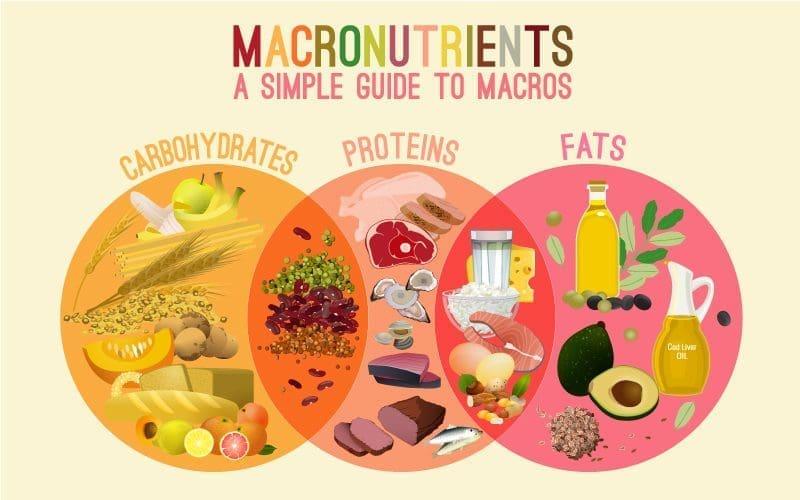In a world overflowing with dietary trends, fads, and conflicting nutritional advice, the quest for a balanced diet can often feel overwhelming. With promises of quick fixes and shortcuts, it’s easy to lose sight of what truly constitutes a healthy, well-rounded eating plan. At its core, a balanced diet is about nourishment—not just for the body, but for the mind and spirit, too. This comprehensive guide aims to demystify the concept of balanced nutrition, breaking it down into practical, actionable steps that anyone can take. Whether you’re a seasoned health enthusiast or just beginning your journey towards better eating habits, understanding the principles of a balanced diet can empower you to make informed choices that will benefit your overall well-being. Join us as we explore the key components of a nutritious plate, the science behind macronutrients and micronutrients, and tips for sustaining a healthy lifestyle that lasts a lifetime. Let’s redefine what it means to eat well and cultivate a vibrant, nourishing relationship with food.
Table of Contents
- Understanding Macronutrients and Their Role in a Balanced Diet
- Incorporating Micronutrients for Optimal Health
- Developing Meal Plans That Reflect Your Dietary Needs
- Common Pitfalls to Avoid for Sustained Nutritional Success
- In Retrospect
Understanding Macronutrients and Their Role in a Balanced Diet

Macronutrients are the building blocks of our diet, essential for a healthy and functional body. They are categorized into three major groups: carbohydrates, proteins, and fats. Each of these macronutrients plays a unique role in maintaining your body’s well-being. Carbohydrates are the body’s primary energy source, fueling everything from high-intensity workouts to daily tasks. Proteins are crucial for muscle repair and growth, enzymes, and hormone production. Fats, often misunderstood, are vital for hormone regulation, nutrient absorption, and supporting cellular structures. Understanding these roles is foundational for anyone looking to establish a balanced diet.
When crafting a balanced diet, it’s important to consider the right proportions of each macronutrient to meet your individual nutritional needs. The general guideline for a balanced diet suggests that:
- Carbohydrates: 45-65% of total daily caloric intake
- Proteins: 10-35% of total daily caloric intake
- Fats: 20-35% of total daily caloric intake
To illustrate how these macronutrients can be effectively incorporated, consider the following illustrative table outlining examples of nutrient-rich foods:
| Macronutrient | Food Sources |
|---|---|
| Carbohydrates | Brown rice, oatmeal, quinoa, sweet potatoes |
| Proteins | Chicken breast, beans, tofu, eggs |
| Fats | Avocados, nuts, olive oil, fatty fish |
Incorporating Micronutrients for Optimal Health

Micronutrients, although needed in smaller quantities, play a crucial role in maintaining overall health and well-being. These essential vitamins and minerals facilitate various physiological functions, ensuring that our body operates at its peak. To achieve a diet rich in micronutrients, consider incorporating a diverse range of food sources. Some of the most important include:
- Leafy Greens: Spinach, kale, and swiss chard are packed with vitamins A, C, and K.
- Nuts and Seeds: Almonds and sunflower seeds are excellent sources of vitamin E and magnesium.
- Fruits: Berries provide antioxidants, while citrus fruits are a great source of vitamin C.
- Whole Grains: Quinoa and brown rice contribute important B vitamins and iron.
- Dairy Products: Yogurt and cheese offer calcium and vitamin D, essential for bone health.
To illustrate the importance of these micronutrients, consider the following table showcasing their benefits and food sources:
| Micronutrient | Primary Functions | Rich Food Sources |
|---|---|---|
| Vitamin A | Supports vision and immune function | Carrots, sweet potatoes, and spinach |
| Vitamin C | Boosts immunity and skin health | Citrus fruits, bell peppers, and strawberries |
| Iron | Essential for blood production | Red meat, lentils, and fortified cereals |
| Calcium | Crucial for bone and dental health | Dairy products, green vegetables, and tofu |
Developing Meal Plans That Reflect Your Dietary Needs
When it comes to crafting meal plans that cater to your unique dietary needs, it’s essential to prioritize variety and balance while being mindful of your individual health goals. Whether you are managing a food allergy, seeking to lose weight, or simply aiming to improve your overall wellness, understanding your specific requirements is the first step toward a successful meal plan. Start by identifying the food groups that are essential for your diet, such as proteins, carbohydrates, fats, vitamins, and minerals. Incorporating a diverse array of foods not only enhances nutrient intake but also keeps your meals exciting and enjoyable.
To streamline the process, consider creating a visual meal planner that outlines your daily or weekly meals. This can help you keep track of what to buy and ensure you stick to your dietary guidelines. You might find it helpful to use a basic table format for organization and clarity. Here’s a simple representation of a balanced daily meal plan that you can customize to suit your needs:
| Meal | Food Choices |
|---|---|
| Breakfast | Oatmeal with berries and nuts |
| Lunch | Grilled chicken salad with quinoa |
| Snack | Greek yogurt with honey |
| Dinner | Steamed vegetables with baked fish |
Utilizing such a structured approach not only provides clarity but also encourages you to incorporate essential macronutrients and micronutrients. Additionally, ensure that you are consistently reviewing and adjusting your meal plans based on how your body responds, as needs can change over time. Keeping a food diary can also serve as an invaluable tool, allowing you to capture your meals and reflect on your nutritional intake regularly.
Common Pitfalls to Avoid for Sustained Nutritional Success
When striving for a balanced diet, it’s crucial to remain vigilant against common missteps that can derail your progress. One such pitfall is over-restriction; while it may be tempting to cut out entire food groups, doing so can lead to nutrient deficiencies and cravings that may ultimately cause binge eating. It is vital to maintain a diverse meal plan that includes all essential nutrients. Instead of focusing solely on what to eliminate, aim for a focus on moderation and variety, allowing yourself to enjoy a wide array of foods in appropriate portions.
Another frequent error is the reliance on fad diets, which often promise quick results but lack sustainability. These programs may not provide balanced nutrition, causing individuals to regain weight once the diet ends. It’s essential to prioritize personalized nutrition, listening to your body’s needs and making adjustments based on what works best for you. Creating a supportive eating environment is also key; surround yourself with healthy food options and find community support to reinforce your efforts. Here’s a simple table summarizing effective strategies to maintain a balanced diet:
| Strategy | Benefits |
|---|---|
| Incorporate Variety | Prevents boredom and promotes nutrient intake |
| Focus on Whole Foods | Supports overall health and wellness |
| Practice Mindful Eating | Improves digestion and satisfaction from meals |
| Plan Meals Ahead | Reduces impulsive choices and enhances nutritional quality |
In Retrospect
crafting the perfect balanced diet is not just about counting calories or restricting certain food groups; it’s about understanding the unique needs of your body and nourishing it with a variety of nutrients. As we’ve explored throughout this guide, a balanced diet provides the foundation for optimal health, energy levels, and overall well-being.
Embracing a diverse array of whole foods, including fruits, vegetables, proteins, healthy fats, and whole grains, not only enhances your physical health but also supports your mental clarity and emotional resilience. Remember, the journey toward a balanced diet is personal and should include mindful eating practices that resonate with your lifestyle and preferences.
As you embark on this path, don’t hesitate to seek support from nutrition professionals who can help tailor your dietary choices to your specific goals and challenges. Change takes time, and small, consistent adjustments to your eating habits can lead to significant improvements in your health.
Ultimately, the key lies in finding balance—not perfection. Celebrate your successes, learn from your setbacks, and keep striving to create a sustainable and pleasurable relationship with food. Here’s to a healthier, happier you, and may your journey toward a balanced diet be fulfilling and enjoyable!



